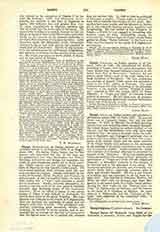

Campi, Grimm, an Italian painter and architect, b. at Cremona about 1500; d. there, 1572. He was the eldest son of Galeazzo Campi, who was his first teacher. In 1522, in Mantua, he studied painting, architecture, and modeling under the great Romano. He visited Rome, became an ardent student of the antique, and like Bernardino—who may have been related to him—he came so strongly under the influence of Raphael‘s and Correggio’s paintings, that he endeavored to combine the best in them into a composite style; indeed, Giulio and the other members of the Campi family were pioneers in the movement to rid painting of its empty mannerisms and to instil into it a healthy vitality. Giulio is called the “Ludovice Carracci of Cremona” although he preceded the founder of the “Eclectics”. When but twenty-seven Giulio executed for the church of Sant’ Abbondio, his masterpiece, a “Virgin and Child with SS. Celsus and Nazarus”, a decoration masterly in the freedom of its drawing and in the splendor of its color. His numerous paintings are grandly and reverently conceived; freely drawn, vigorously colored, lofty in style, and broadly handled. He was a real founder of a school, and was animated in all his work by a deep piety. The churches in Cremona, Mantua, and Milan are filled with his frescoes; and Saint Margaret’s, in his native town, is a Giulio Campi gallery. Among his chief works are the “Descent from the Cross” (S. Sigismondo) at Cremona, and the frescoes in the dome of S. Girolamo at Mantua. An altar-piece in S. Sigismondo and his “Labors of Hercules” were engraved by the celebrated Ghiso, “il Mantovano”.
LEIGH HUNT

